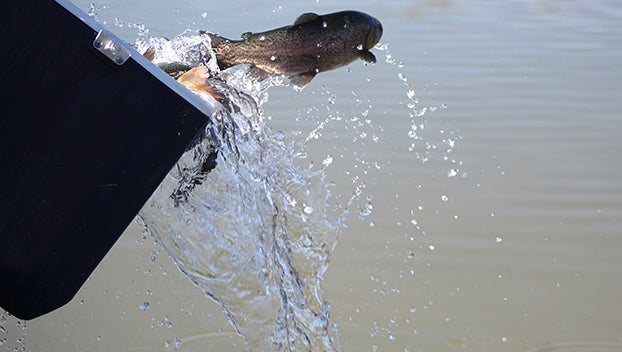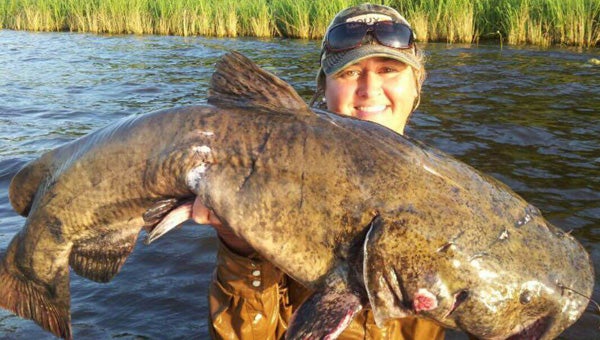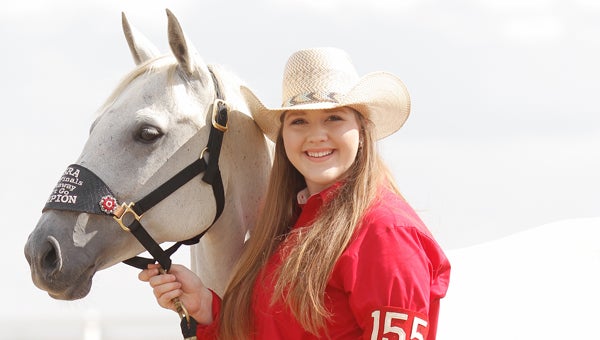Drift fishing produced white perch last week
Published 12:02 am Sunday, June 10, 2012
A slight rise is coming down the Mississippi River.
Normally fishermen would not welcome a rise, but with the big river so low, this rise is welcome.
The river stage at Natchez Saturday was 17.8 feet. That’s up one foot from a couple days ago when the river was at the lowest stage of this year.
By Wednesday, we will see a level of approximately 18.2 feet. That’s great news for the Old River fishermen and ladies.
The river water is several degrees cooler than lake water. A shot of cool river water will certainly spur a bit of fish activity on the live oxbow lakes.
Last week several people stopped by showing off near limits of huge sac-au-lait (white perch). These fish were fat and healthy.
Of course I ask what’s the productive pattern?
The fishermen were all basically doing the same thing, which is drift fishing.
The perch were holding over 20- to 25-foot depths suspended 14- to 16-feet deep.
There are a couple reasons the fish are suspended.
One is the hot water. Surface-water temperature of the Old Rivers is several degrees above normal for the season. That pushed the shad out to deep water.
Where there is bait fish you will find game fish. The shad aren’t on the bottom in deeper water because a thermocline has developed at 18- to 20-feet.
Fish can’t live below an established thermocline because of lack of oxygen.
It’s real easy to find the thermocline with a good sonar unit. On some of the cheaper units you may have to increase the sensitivity to pick up the thermocline on the screen, which appears as a shaded band.
Rough fish like gar, carp and buffalo can help you determine the thermocline too. The rough fish will stack up at a certain depth. Just idle over deep water and watch your sonar. If you see a lot of rough fish at certain depth you can bet they are holding just above the thermocline.
This really helps keep your perch lures in productive water.
If the thermocline is at 18- to 20-feet, there is no use fishing any deeper. Despite surface-water temperature in the upper 80s, some largemouth bass are holding in really thin water, anywhere from three to eight feet.
Someone caught a nice largemouth early this week on one of the Old Rivers that weighed just over 7 pounds. That’s a big fish for the Old Rivers.
While five- to six-pound bass are common on the live oxbow lakes, you don’t see many Old-River bass weighing more than seven pounds.
The bream on the Old Rivers have really scattered out. You can pick off one here and there fishing the dead willow stumps and logs, but it is difficult to find the bream bunched up.
The catfish spawn is winding down, but that certainly does not mean you can’t find the catfish. I have recently talked to numerous Mississippi River fishermen, and they said the river is producing more catfish this year than in years past.
Others said they have never witnessed such great fishing on the big river as they are having right now.
Most are using live goldfish and the targeted species is the most desirable flatheads (also called yellow cat or Opelousas).
Unlike the blue and channel catfish that like bait that stinks, the Opelousas cats prefer live bait. Goldfish works great.
The good fishing should continue on the Mississippi as well as the Old Rivers.
The rise should be over by mid-week, and we will see a sharp fall come downriver.
Remember our lakes are loaded with pleasure and fishing boats. If you’re the captain, you are responsible for everyone on board.
Wear your life jacket when underway and keep an eye out for oncoming boats. You never know what that might do.
Eddie Roberts writes a weekly fishing column for The Democrat. He can be reached at fishingwitheddie@bellsouth.net.





